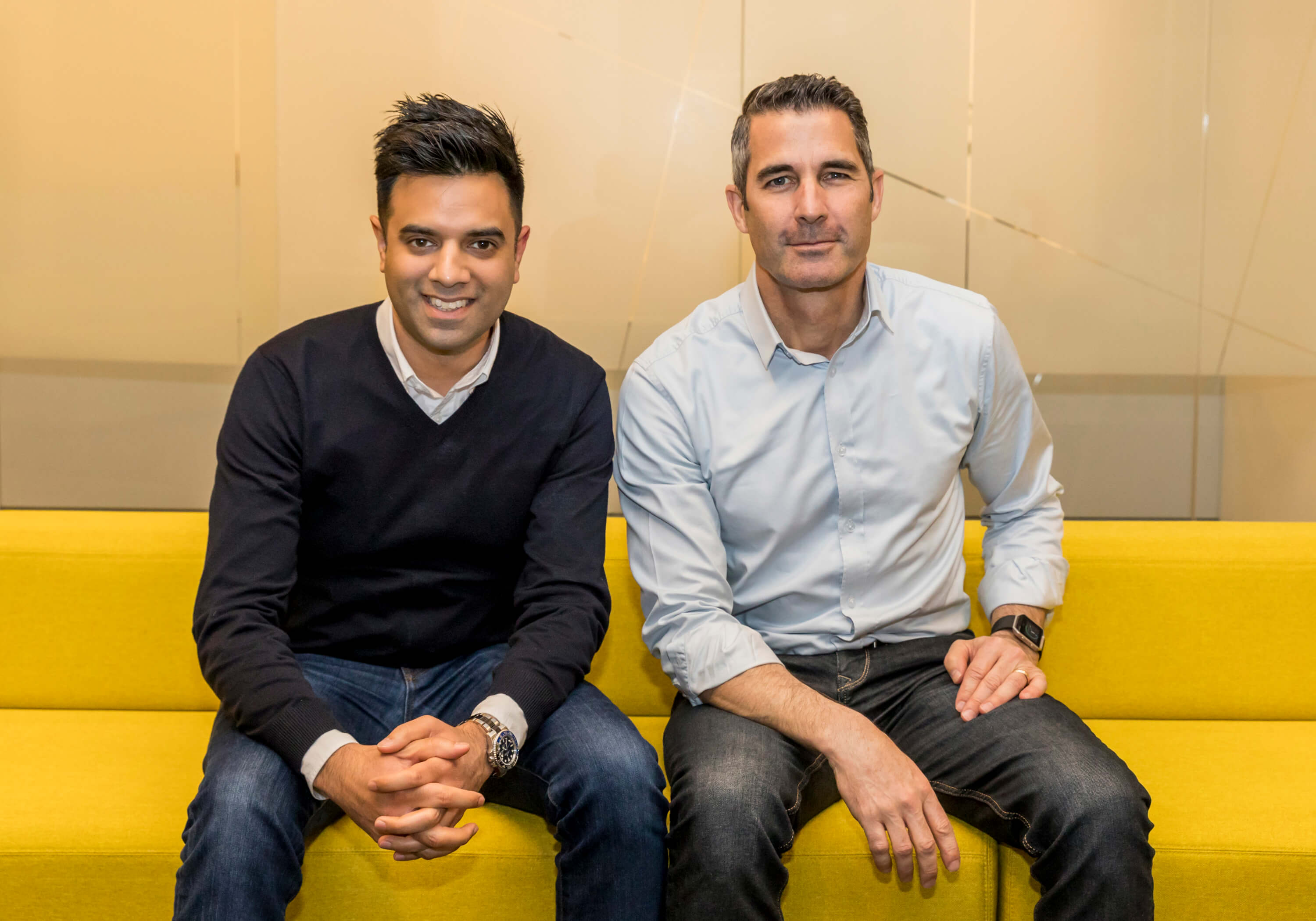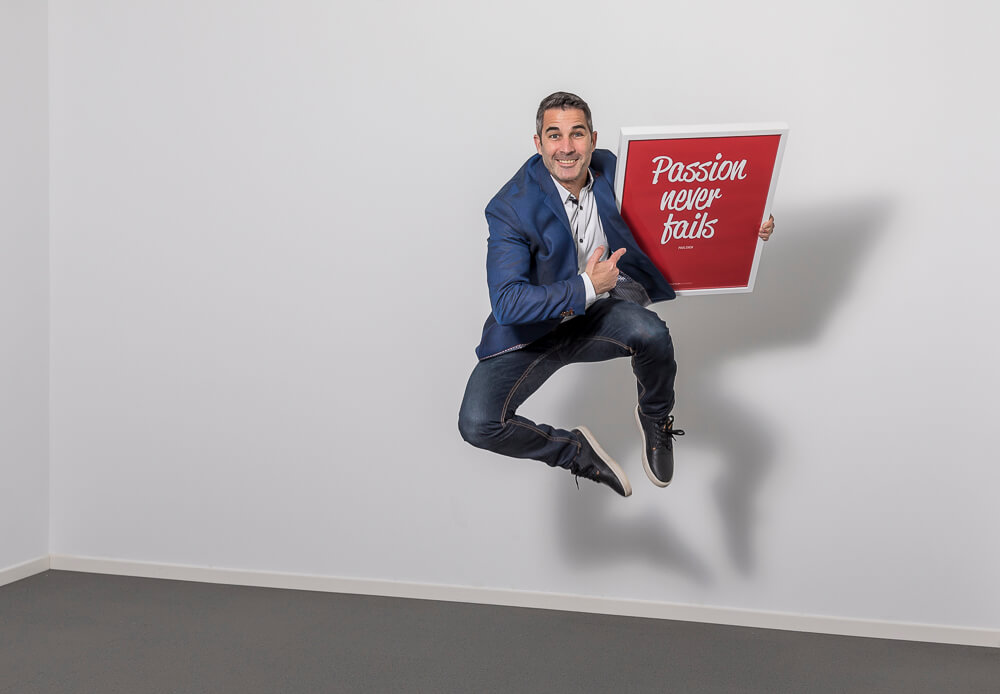Luge Capital : Where financial institutions meet technologically innovative start-ups

To understand the kind of firm that Luge Capital is, think of a venture capitalist who proudly wears a t-shirt of a company that they just invested in and spends the day manning the company’s conference booth to help. That kind of firm.
“We are investors who are very involved in helping build our portfolio companies,” says David Nault, who co-founded Luge Capital with his partner, Karim Gillani, in 2018. “We provide them with access to our network, experience and guidance however, we understand the difference between being an investor and an operator. Our role is to guide entrepreneurs—not to tell them what to do. They make the final decisions and we trust their instincts.”
But what, exactly, is Luge Capital?
A start-up helping start-ups
Luge Capital manages a venture capital fund which has currently invested in 12 companies, of which 80% are based in Canada and the remaining 20% in the U.S. It was founded by two former entrepreneurs and executives active in the financial sector. The firm sees itself as an “investment start-up” serving fintech start-ups, i.e. companies that develop digital technology for financial services.
David Nault explains that “we created Luge to meet a dual need. First, Fintech start-ups need to be able to turn to a fund specializing exclusively in their industry, something that is not often seen in Canada or the U.S. Furthermore, a fund that large financial institutions can benefit from to help drive innovation, serving their needs and our portfolio companies. That was and remains today the thesis behind CDPQ and Desjardins, who led the first investment in Luge. Five other highly strategic financial institutions, namely Sun Life Financial, Fonds de solidarité FTQ, La Capitale, IA Financial Group and BDC, shared that vision and quickly joined the fund thereafter.”
Luge’s business model involves building bridges between fintech start-ups and large financial institutions, which provide both with insights to validate solutions, a first customer base or partnership and, in some cases, access to additional value-added capital. It’s a win-win strategy.
An eye on financial institutions
“It is important to understand that large financial institutions rest on a foundation of legacy technology and of business practices that hamper their innovation cycles—which is an opportunity for start-ups,” says David. “As a general rule, however, most of our companies do not try to compete head to head with large banks or big insurance companies. Instead, they develop the technology that will be integrated into their businesses. This is a more realistic strategy than trying to compete against an established, trusted brand with a large client base—two assets that financial institutions already have.”
That is not to say a portfolio company can’t venture into B2C territory, however, it is usually only to first demonstrate that its solution is attractive to customers. One case in point is Till, a digital bank allowing children to develop financial autonomy at a young age. Luge invested in this challenger bank operating currently in the U.S. market.
A pipeline consisting of 1,400 companies
After just two years, Luge Capital’s pipeline of opportunities includes some 1,400 fintech companies, 75% of which are in Canada and 25% in the U.S. Already well known in Canada and the U.S., Luge is solicited by a great number of fintech entrepreneurs while continuing to be very active in finding new targets based on the needs identified by investment partners. Luge also publishes on its website assumptions regarding technology solutions that could change the world of finance, inviting entrepreneurs to come forward.
However, with 12 investments to this day, Luge Capital remains very selective. Like many other venture capitalists, its main criterion, once a product’s relevance has been validated, is the management team’s ability to deliver the goods—as well as sell them to large financial institutions. “There is the product-market fit but, for us, founder-market fit is equally important,” he adds.
Given that Luge works actively with entrepreneurs, it has another criterion to meet prior to investing: “Will we be able to leverage our industry insights and our network to help this company grow?”

From seed capital to Series A financing
With a maximum initial investment of $2 million as a first check, Luge Capital is mainly involved in seed capital and Series A financing. Their goal? To lead the company to its first million dollars in sales by demonstrating its product-market fit and then help the company move on to the next investment round.
“We provide support on different levels. Our network allows us to put the entrepreneur in contact with customers, partners, talent and additional capital. We can also provide business intelligence to help understand the competitive environment or shed light on technology choices. We’ve even helped recruit a new CTO and senior members of the sales and marketing teams. Ultimately, we help companies gain traction, “package” their story and organize the next round of financing.”
At Luge, we see entrepreneurs as athletes that are driven forward, persevere during hard times, and take risks, sometimes falling but then getting right back up again.
“We are on the luge with them planning the fastest route to the podium.”
••••••
Behind the numbers

What David Nault likes the most about his job.
“Our whole team loves working with mission-driven founders and giving back in any way we can.”
What he likes the least about his job
“As investors we say ‘no’ on average 99 times out of 100. In the long run, it’s hard when you know the entrepreneur was hoping for a ‘yes’. I’ve been in their shoes and I sympathize with them.”
Someone who inspires him
“I really respect Inovia’s Chris Arsenault. He’s a great example of a what a fund manager should be. He manages his team and coaches his portfolio companies super well. I continue to learn a lot from him”
Bedtime reading
I just finished Obviously Awesome! to prepare for a live webinar with the author and founders on product positioning. But, honestly, I’m a person who also needs to move. I love physical activities and things that give me an adrenaline rush or push my limits, like car racing. It’s very hard to read when driving fast.”
Favourite series
A movie on Netflix: “The Boy Who Harnessed the Wind.” The story of a 14-year-old boy in Africa who defeated all odds. Very inspiring! Another I liked was “Playbook: A Coach’s Rules for Life” because coaching is such a big part of our role as an early stage VC.
Current playlist
“I listen to everything! Rock, rap and dance. Other than opera and jazz, I can listen to anything from any year—it all depends on my mood and activity I’m doing.”
WANT TO LEARN MORE?
Visit the Luge Capital website.